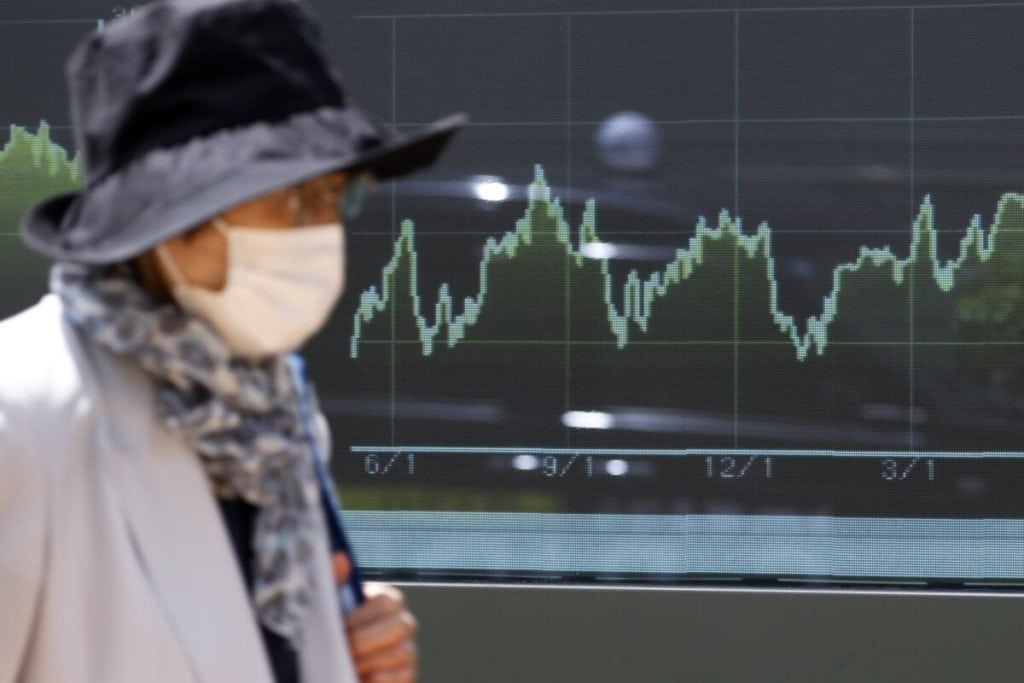
Asian stocks traded mixed as investors contemplated a protracted period of higher interest rates. The dollar held gains after its recent rally.
Benchmarks in Japan and Australia declined, while those in South Korea traded flat. Equities in Hong Kong and mainland China edged higher after industrial profits in the world’s second largest economy improved. The S&P 500 and Nasdaq 100 indexes both slumped 1.5% Tuesday as Wall Street’s fear gauge — the Cboe Volatility Index or VIX — hit the highest since late May after US consumer confidence fell to a four-month low. Contracts for US equities rose during Asian trading.
The MSCI All Country World Index, one of the broadest measures of global equities, edged lower for a ninth day, heading for its longest losing streak in more than a decade. The slump has pushed the gauge to its 200-day moving average, a key level of support just as indicators suggest momentum in the selloff is stretched.
“Ultimately, a lot of it will depend on rates and rate volatility,” said Chamath De Silva, a senior fund manager at Betashares in Sydney. “Global equity selling will probably take a breather once the global bond selloff does.”
China will just about meet its economic growth target of around 5% for this year, the latest Bloomberg survey shows, although the ongoing property crisis is raising the risk of a miss. A gauge of Chinese property developers fell for a third straight session amid fresh signs of turmoil for the sector.
Yields on Treasuries remain near decade highs while the Bloomberg dollar index held around its 2023 peak. The yen remains near 149 per dollar, keeping traders on edge for any step up in language from Japanese officials to gauge whether intervention to support the currency is on the horizon.
With the bond market guiding the direction for stocks and currencies, investors are pondering whether 10-year Treasury yields will extend gains, said Tony Sycamore, an analyst at IG in Sydney. If current levels break, “then there is little in the way of upside resistance until the 4.90%/5.00% region, which would likely unleash a violent response in equity markets.”
Emphatic Fed
One Fed speaker after another in the past week has delivered emphatic messages that they will keep policy tighter for longer if the economy is stronger than expected. The Fed’s hikes have hit consumer sentiment which dropped to 103 from a revised 108.7 in August, missing the median estimate of 105.5 in a Bloomberg survey of economists.
Meanwhile, Senate Democratic and Republican leaders agreed Tuesday on a plan to keep the government open through mid-November and provide $6 billion in assistance to Ukraine. The plan to avert a shutdown on Oct. 1 still needs to overcome gridlock in the House.
Investors “seem to favor the cut-run manoeuvre this week,” said Stephen Innes, managing partner at SPI Asset Management. “Heightened investor anxiety due to the looming possibility of a partial US government shutdown is not helping matters.”
Elsewhere in Asia, Australia’s monthly inflation gauge accelerated, reflecting global trends amid higher oil prices, bolstering the case for the Reserve Bank to hike at least one more time.
In commodities, oil resumed its climb, moving back above $90 a barrel, as the effect of rapidly tightening supplies outweighed a weakening risk appetite in broader markets, while gold held around $1,900 an ounce.
























